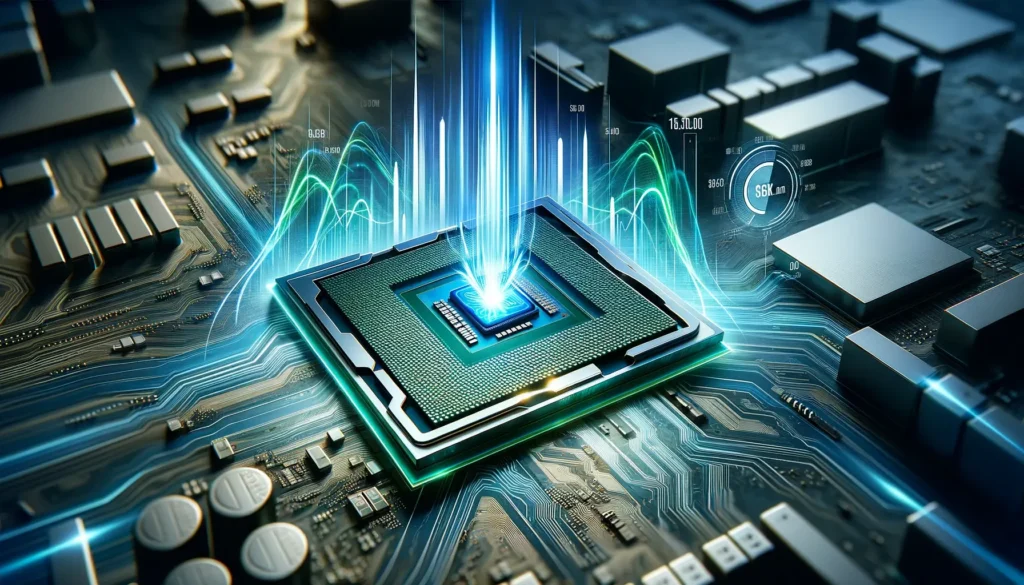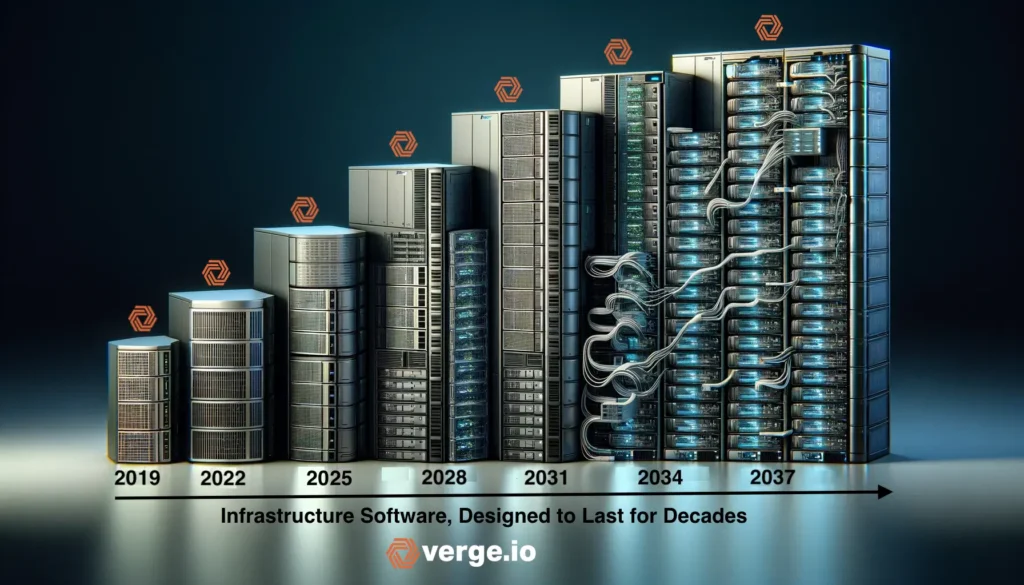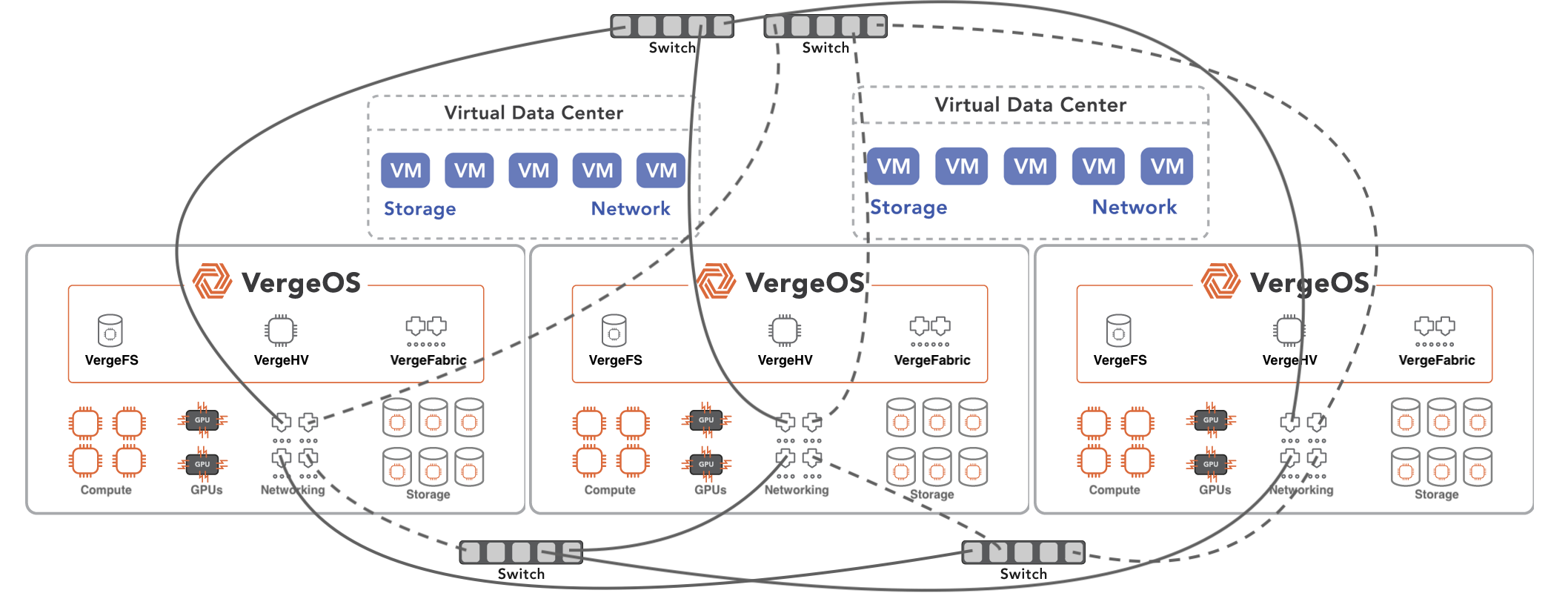
Many IT Professionals disqualify Hyperconverged Infrastructure (HCI) as a VMware Alternative because they feel that overcoming HCI shortcomings is more expensive than continuing to use legacy three-tier architectures. These shortcomings are in areas where HCI was initially intended to excel: price, performance, scalability, and simplicity.
Overcoming HCI shortcomings led the VergeIO team to start from a clean slate and create the industry’s first UltraConverged Infrastructure (UCI) solution, VergeOS. It provides a superior, cost-effective alternative to HCI and the traditional three-tier infrastructure. Watch our on-demand webinar, “Beyond HCI” for a comparison of VergeOS’ UCI to the VMware and Nutanix HCI solutions.
In this article, we will explore the critical shortcomings of HCI, which lead IT planners to continue to leverage dedicated infrastructure, and how UCI overcomes them.
Can HCI Deliver Better CPU Performance?
The short answer is no. HCI can’t outperform the traditional three-tier architecture, which has dedicated hardware powering each tier. The reason is that HCI uses shared hardware to power at least four separate software packages, to deliver:
1) A package that contains the core operating system and the hypervisor.
2) A package that contains the storage software.
3) A package that contains the network software.
4) A package that contains the management software.
Each of these packages consumes CPU resources, and HCI’s lack of integration between them means it discards the potential gains in efficiency that combining them into a single code base would deliver. IT must install these packages as separate entities, making installation more complex. Then, once they are all installed and running and IT is ready to create a VM for the organization instead of for infrastructure, they’ve already lost as much as 20% of the CPU resources. To compensate, HCI requires the purchase of more powerful (and expensive) servers.
Another challenge is that as your application executes within the VM, it is probably running through much of the above stack. It uses the CPU to process requests from users. It is using storage IO to read and write data. It is using network resources to receive that input and deliver results. Finally, the VM’s health is reported to a management console in order to report on its health. Each transaction that the application executes is mired down in overhead.
The inefficiency of the code base forces HCI vendors into a predictable pattern of making customers buy turnkey hardware and software solutions from them, or buy new hardware using a strict hardware compatibility matrix. The required hardware must also be overpowered to compensate for the inefficiency, increasing costs.
UCI Delivers Near Bare Metal Performance

The fundamental difference between UCI and HCI is that UCI goes the extra step and eliminates the four separate software modules listed above. Instead, it integrates them into a cohesive code base, increasing resource efficiency. VergeIO typically uses less than 3-5% of CPU resources. The efficiency of resources also improves each VM transaction since no layers of code are involved in each request.
VergeIO customers consistently report measurable improvement in performance-demanding VMs and increased VM density while using existing hardware. Many VergeIO customers even report virtualizing formerly bare metal workloads and seeing a performance improvement.
Can HCI Deliver Better Storage Performance?
Concerns over storage performance are the number one reason customers will disqualify HCI in favor of dedicated three-tier architectures. Storage performance and storage scalability are very legitimate concerns for HCI vendors. First, most HCI vendors don’t use their own storage software. Often, they use an open-source solution like ZFS or CEPH, which were not designed for the unique requirements of providing storage services to a virtualized infrastructure. The solution remains convoluted even if they have their storage code.
Because of the lack of integration, HCI vendors have stumbled through implementing advanced drive failure protection and storage efficiency algorithms like deduplication. Adding these capabilities post-facto adds another layer to an already complex combination of software. For this reason, most vendors force customers to choose between storage efficiency and advanced drive redundancy.

UCI Delivers Better Storage Performance
The storage performance delivered by a UCI solution like VergeOS can outperform an HCI solution and a dedicated storage array while significantly reducing the storage cost. VergeOS correctly balances storage efficiency and storage performance. Its deep integration into the core software enables features like drive failure protection and global inline deduplication to work without adversely impacting performance.
Can HCI Deliver Better Scale?
By its very nature, HCI is scale-out, so scale should be an advantage, but once again, it falls short. Most HCI solutions require three servers (nodes) to start. It forces many small data centers to use two servers and a SAN or NAS. Many of these customers would benefit from a simple two-node solution that includes all the storage and networking functionality within those nodes.
HCI also doesn’t meet the scaling demands of enterprises. Most HCI solutions can only scale to eight nodes per instance before network traffic becomes challenging. They also have to buy similar nodes with each upgrade. If their needs change, they have to start an entirely separate instance of the HCI environment. As a result, many customers opt for the legacy three-tier architecture because each tier can be scaled independently of the other.
UCI Delivers Better Scale

Overcoming HCI shortcomings requires an infrastructure that is flexible and can adapt to the changing demands of the organization.
As we explain in our article “The Full Value of Scale”, a UCI solution like VergeOS delivers a three-dimensional scale. It can start with as few as two nodes, making it ideal for small data centers and remote offices, but it can also scale to hundreds of nodes to meet the needs of the most demanding enterprise. Nodes within the VergeOS instance can be different from each other. Customers can use nodes that provide balanced compute and storage, or mainly compute, or mostly storage, have GPUs installed, or any combination of the above.
Why is HCI More Expensive than Legacy Three Tier?
HCI should have a significant price advantage over legacy three-tier infrastructure. By definition, it is supposed to use off-the-shelf commodity servers, storage, and network hardware. However, this is seldom the case. Under the guise of “making it easy to install and support,” these vendors either require you to buy a turnkey hardware and software solution from them, require you to buy a specific configuration from one of their “certified” hardware vendors, or have a rigorous hardware compatibility list.
The inefficiency of layering virtualization software, storage software, and networking software as three separate software packages also drives up the cost of HCI. Customers must buy much more powerful nodes to support the additional overhead.
UCI Delivers Better TCO and ROI
Overcoming HCI shortcomings requires an infrastructure that can deliver the promise of reduced cost and simplified operations.

VergeOS’ tight integration of the hypervisor, storage, and networking software means customers can actually use off-the-shelf storage from whichever vendor they choose. This flexibility means there is no need to pay a premium for a so-called turnkey solution. Additionally, because VergeOS is licensed by the physical server, not the contents of that server, as you scale your environment, you can use quad-socket servers with massive core counts and not get crushed in licensing costs.
As we discuss in our article “The High Cost of Dedicated Storage”, VergeOS also dramatically lowers the cost of storage. You can use off-the-shelf server-class flash and hard disk drives, eliminating the 5X to 10X markup levied by dedicated storage array vendors.
The savings even follow through to the network. With VergeOS, you can use off-the-shelf commodity switches. When ready, you can replace dedicated network appliances like firewalls with VergeOS’ built-in L2 and L3 networking capabilities.
Conclusion
In conclusion, Hyperconverged Infrastructure (HCI) makes a poor foundation for an alternative to VMware, particularly in CPU performance, storage efficiency, scalability, and cost. Despite HCI’s initial promises of simplifying operations and reducing costs, it typically fails to meet these objectives due to its inherent inefficiencies.
Yet the cost and complexities of three-tier architectures remain. This has led to the development of VergeIO’s UltraConverged Infrastructure (UCI), which addresses HCI’s shortcomings as well as the three-tier challenges. VergeOS integrates infrastructure software modules into a single, cohesive codebase, enhancing performance and scalability while reducing costs. As such, it presents itself as a more viable solution for customers seeking a VMware alternative as well as for those seeking a simpler, more scalable data center infrastructure.
Learn More
- Schedule a Technical Deep Dive on the UCI Architecture
- Set up a Test Drive of VergeOS



